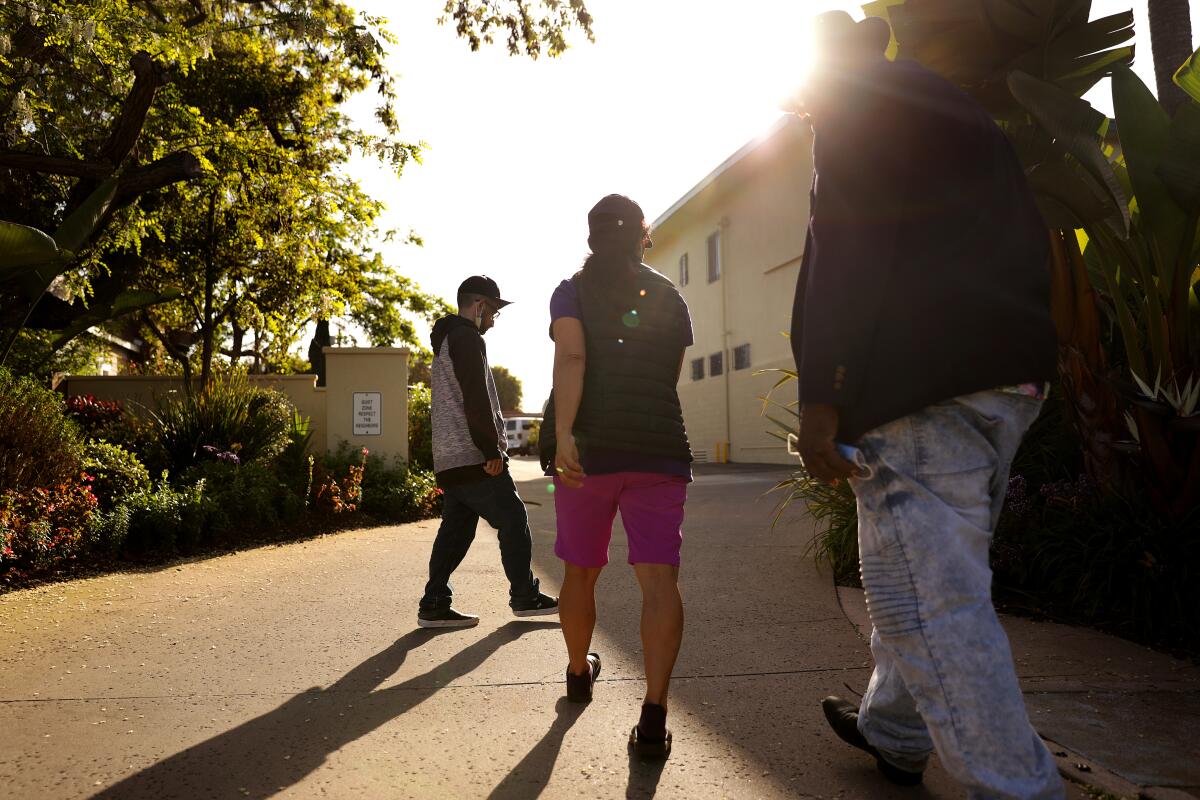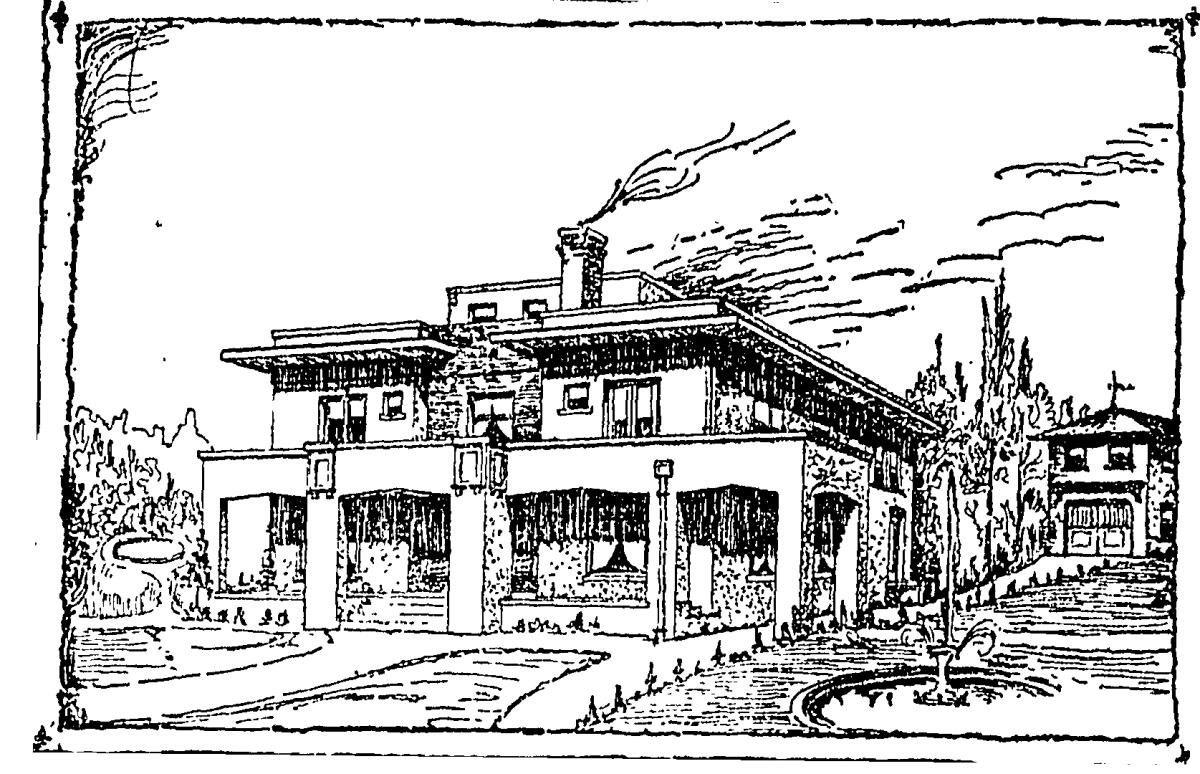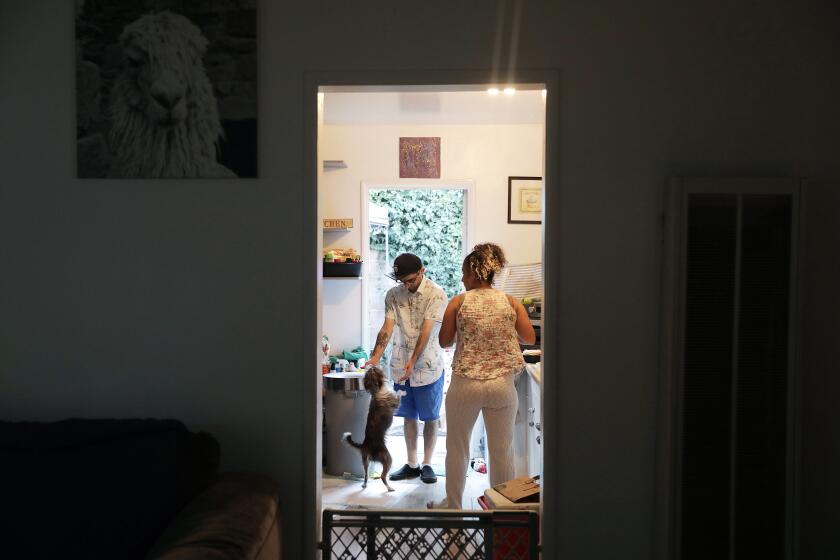Meadowbrook and L.A.’s long and conflicted relationship with mental illness

- Share via
To stand on East Boulevard in West Los Angeles is to get a short history lesson in the city’s conflicted relationship with mental illness.
East Boulevard and its companion street, Marcasel Avenue (formerly West Boulevard) form the Mar Vista Oval, one of the region’s first subdivisions. Laid out with broad sidewalks and parkways planted with Canary Island palms, the development was advertised in The Times on New Year’s Day 1912.
“… no better place for a country home...”

Visitors to “the new aristocratic suburb” dubbed Palm Place would have found one home, an architectural bell cow, standing in an empty field. Italianate-Mission in style, boxy with projecting cornice and flat roofline, it belonged to the developer, who in 1925 turned his private villa into a sanitarium and orphanage.
At the time, the area — far enough away from complaining neighbors — had already begun to attract similar institutions. The St. Erne Sanitarium had opened on the adjacent West Boulevard, and three others nearby specialized in the feared and stigmatized afflictions of tuberculosis, alcoholism and, in the language of the day, insanity.
In 1927, the city of Los Angeles annexed Mar Vista, and the city, citing a zoning violation, sought to close these facilities. Their owners were threatened with arrest, but in 1930, a state Court of Appeal blocked the city’s action, finding it discriminatory.
Over the decades, the developer’s home has served as an asylum, an orphanage, an “old-folks home,” then in the 1960s, with the construction of an adjoining single-story brick building, the Meadowbrook Manor Nursing Home for men and women with mental illness.
The life of a 31-year-old living with schizophrenia illustrates the toll of illness and the challenge of getting severely mentally ill people off the streets.
The timing was opportune. Lawmakers in Sacramento, eager to close the state-run psychiatric hospitals, had delivered to Gov. Ronald Reagan a sweeping reform package known as the Lanterman-Petris-Short Act.
Administrators of those hospitals began to place their patients into smaller, community facilities. The elderly were among the first. Passage of Medicare in 1965 provided a federal revenue stream for treatment of those 65 and older who suffered from diseases such as Parkinson’s and dementia.
By the late 1970s, with the creation of another source of federal money — the Supplemental Security Income benefit for the disabled — the demographics of these community facilities shifted to younger and more seriously ill patients.
Meadowbrook Manor, once an open board-and-care facility, was converted in 1978 to a locked residential home. Neighbors complained. Patients were described in public hearings as getting out, wandering the street, screaming and cursing day and night.
The city of Los Angeles once again got involved and tried to restrict Meadowbrook to caring only for convalescing patients or those with “mild” mental conditions, but Meadowbrook’s attorney argued that the 1930 decision protected the facility from this restriction.
A Times reporter and photographer spent months chronicling the life of a man living with schizophrenia.
Neighbors continued their fight. Eventually a new conditional-use permit was written in 2004, establishing stringent rules for monitoring patients.
In the midst of these negotiations, the parents of patients at Meadowbrook reminded the city that institutions like this are needed.
“My son has been disturbed for 15 years,” one parent told The Times. “He was in places like Norwalk, Camarillo. This is the best place for him so far.”
“Meadowbrook helps turn these people back into human beings,” said another. “If [my son] has to go somewhere else, he’ll regress, and then we’ll have to start all over again.”
Twenty years later, Meadowbrook Behavioral Health Center, a 77-bed facility, is one of 82 Institutions for Mental Disease throughout the state. The Los Angeles County Department of Mental Health sends patients to 16 of these facilities, which can treat approximately 1,000 patients.
The department needs to find room for an estimated 3,000 more.
Personal essays, insight from experts and resources to help manage mental health.
More to Read
Sign up for Essential California
The most important California stories and recommendations in your inbox every morning.
You may occasionally receive promotional content from the Los Angeles Times.














